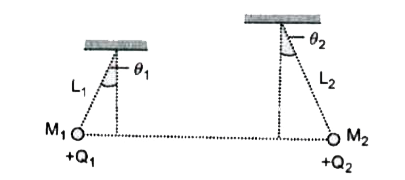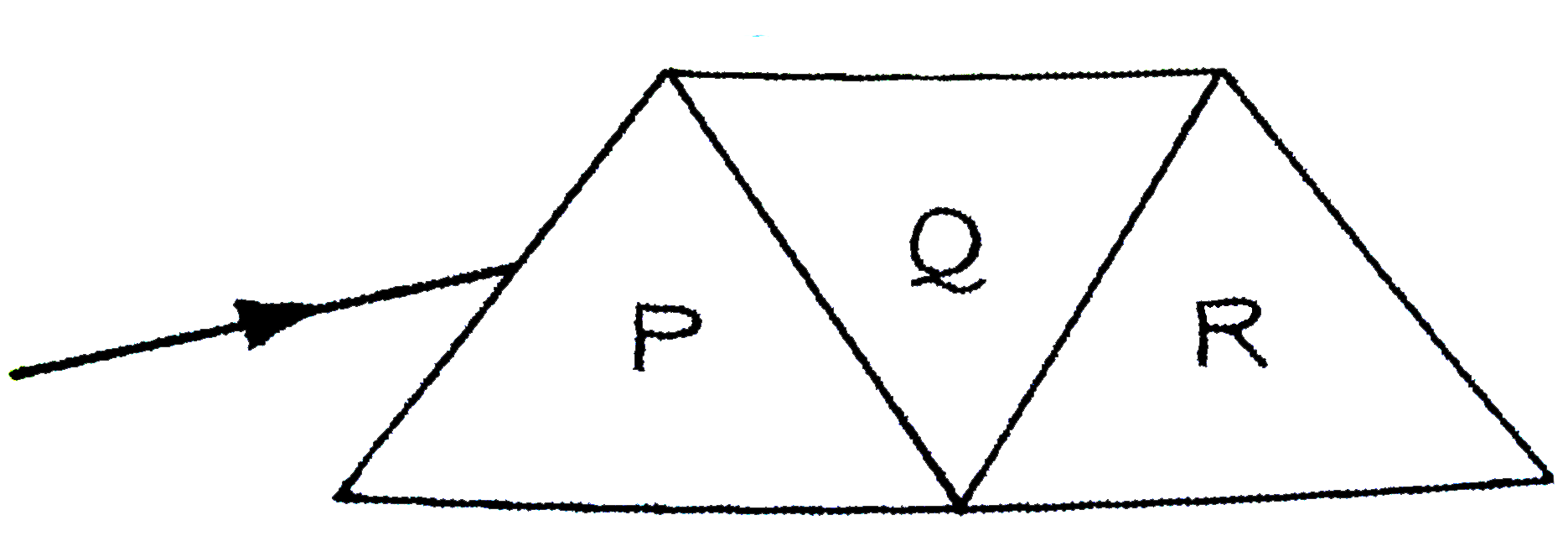Two beams P and Q of light of the same wavelength fall upon the same metal surface causing photoemission of electrons. The photoelectric current produced by P is four times that produced by Q. Which of the following gives the ratio
wave amplitude of beam Pwave amplitude of beam Q?Solution in Kannada
14
12
2
4
The correct Answer is:C
Wave amplitude of beamPWave amplitude of beam Q=(Current of P)1/2(Current of Q)1/2=(41)(1/2)=2
Topper's Solved these Questions
- ELECTRONS & PHOTONSBOOK - MODERN PUBLICATIONCHAPTER - ELECTRONS & PHOTONSEXERCISE - MULTIPLE CHOICE QUESTIONS (LEVEL-III)
9 Videos
- ELECTRONS & PHOTONSBOOK - MODERN PUBLICATIONCHAPTER - ELECTRONS & PHOTONSEXERCISE - RECENT COMPETITIVE QUESTIONS
20 Videos
- ELECTRONS & PHOTONSBOOK - MODERN PUBLICATIONCHAPTER - ELECTRONS & PHOTONSEXERCISE - RECENT COMPETITIVE QUESTIONS
20 Videos
- ELECTROMAGNETIC WAVESBOOK - MODERN PUBLICATIONCHAPTER - ELECTROMAGNETIC WAVESEXERCISE - RECENT COMPETITIVE QUESTIONS
4 Videos
- ELECTROSTATICSBOOK - MODERN PUBLICATIONCHAPTER - ELECTROSTATICSEXERCISE - RECENT COMPETITIVE QUESTIONS
39 Videos
Similar Questions
Energy required for the electron excitation in Li++ from the first to the third Bohr orbit is :
View SolutionAccording to Einstein's photoelectric equation the graph of K.E. of the photoelectron emitted from the metal versus the frequency of the incident radiation gives a straight line graph whose slope
View SolutionAccording to Einstein's photoelectric equation the graph of K.E. of the photoelectron emitted from the metal versus the frequency of the incident radiation gives a straight line graph whose slope
View SolutionThe speed of electromagnetic wave in vacuum depends upon the source of radiation
View SolutionTwo small spheres of masses M1andM2 are suspended by weightless insulating threads of lengths L1andL2 The spheres carry charges Q1andq2 respectively . The spheres are suspended such that they are in level with one another and the threads are inclined to the vertical at angles of θ1andθ2 as shown . Which one o fthe following conditions , if θ1=θ2 ?

View SolutionTwo sources of sound A and B produces the wave of 350Hz. They vibrate in the same phase. The particle P is vibrating under the influence of these two waves, if the amplitudes at the point P produced by the two waves is 0.3mm and 0.4mm then the resultant amplitude of the point P will be when AP−BP=25cm and the velocity of sound is 350m/sec.
View SolutionTwo persons P and Q of same height are carrying a uniform beam of length 3m . If Q is at end, the distane of P from the other end so that P,Q receive loads in the ratio 5:3 is
View SolutionAssertion (A) : If two waves of same amplitude produce a resultant wave of same amplitude produce a resultant wave of same of same amplitude, then the phase difference between them may br 120^(@) . Reason (R ) : The resultant amplitude of two waves is equal to algebraic sum of amplitude of two waves.
View SolutionIf two waves of same frequency and same amplitude superimpose and produce third wave of same amplitude, then waves differ in phase by –
View Solutionएक समबाहु प्रिज्म P में एक दी गई प्रकाश-किरण में अल्पतम विचलन उत्पन्न होता है। उसी पदार्थ तथा उसी आकार की दो प्रिज्मे Q व R चित्रानुसार रख दी गई है। अब यह किरण:

View SolutionA muscial instrument P produces sound waves of frequency n and amplitude A. Another musical instrument Q produces sound waves of frequency n4. The waves produced by P and Q have equal energies. If the amplitude of waves produced by p is AP, then the amplitude of waves produced by Q will be
View SolutionWhen beam of green light is incident on a surface, photo electrons are emitted. If a second beam of different frequency produces photoemission from the same surface, then it may consists of
View SolutionTwo metalic spheres p and Q are made of same material have same smoothness but the weight of p is 8 times that of Q if the two are heated to same temperature and left to cool then the ratio of rate of cooling of Q to that of p is
View SolutionTwo waves of the same frequency and amplitude super impose to produce a resultant disturbance of the same amplitude. The phase difference between the waves is.
View SolutionIf two waves of the same frequency and amplitude respectively on superposition produce a resultant disturbance of the same amplitude the waves differ in phase by
View Solution
